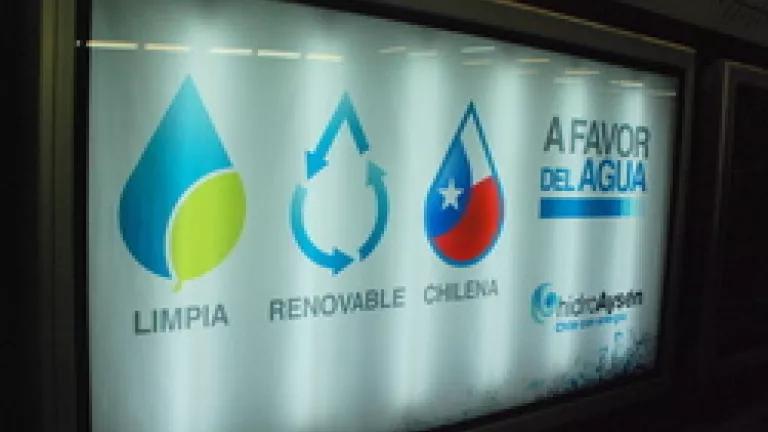
Last week, the CFO of Endesa, one of the parent companies of HidroAysén, made an important announcement that has generally gone unnoticed by the media: HidroAysén’s latest cost estimate is $10 billion. This increase, announced at a hydropower summit hosted by Business News Americas, is indicative of an on-going trend for the company. It begs the question: how much is too much to spend on a project that over 74 percent of Chileans don’t want? At what point will the companies involved in HidroAysén –Endesa and Colbún—realize that they would likely do far more good by investing half that amount in better energy options, like renewables and efficiency?
In early 2008, HidroAysén estimated that the entire project would cost a little over $4 billion: about $1.5 for the complex of five mega-dams in Patagonia, and $2.5 billion for the the 2000 kilometer transmission line needed to carry the dams’ electricity to the main grid. Later that year, the total for both components rose to $5 billion. In May 2010, HidroAysén upped the price to $7 billion total ($3.2b for the dams, and $3.8b for the line). As Business News Americas recently reported, the new estimate is $10 billion.
It is expected that the massive project’s price tag would grow over time, particularly as the costs of construction commodities, such as concrete, metals and fuel for transportation, are on the rise globally. Yet these increases are driven by other factors as well, mainly the complexity of the transmission line, which will have to run around volcanoes, over seismically active area, under water, and through national parks.
Proponents of HidroAysén claim that it is “Clean, Renewable, Chilean.”
Photo: poster in the metro in Santiago, Chile
I can think of other types of energy that are truly clean, renewable and Chilean – and that are much closer to the energy demand than HidroAysén: solar, wind, geothermal, efficiency, biomass. With the exception of solar, these technologies are already cost-competitive with conventional energy sources like large hydro and coal. By 2020, Bloomberg New Energy Finance estimates that solar will be, too. GE expects solar to be cost-competitive in five years. How high does the price need to be in order for the parent companies of HidroAysén – Colbún and Endesa Chile – to realize that they would do far more good by investing $10 billion, or even half of that amount, in renewables and efficiency? Doing so would boost entire new sectors, create jobs, and help Chile become a leader in modern energy technologies.
Instead, HidroAysén’s proponents continue to push for a contentious project whose approval has ignited massive protests throughout the country, with tens of thousands of people repeatedly marching in the streets. They still pursue this costly project that technical studies have shown is not even necessary. They maintain that HidroAysén is the best solution for Chile’s costly energy grid, while a new study published by ACERA (the Chilean Renewable Energy Association) proved that the existing renewable capacity in the main grid, which was only 3% of the total generation, saved almost $130 million in 2010. And they insist that HidroAysén is the best energy future for Chile, even though the presentation NRDC gave to Chile’s Congress in May, based on the Bloomberg New Energy Finance data, proved that there are plenty of less destructive, more geographically feasible and economically viable options.
The earliest that HidroAysén’s entire project would be completed and operational is, at present, 2029. How high will the price tag be then? Based on what we’ve seen so far, I imagine it will be more than $10 billion.
